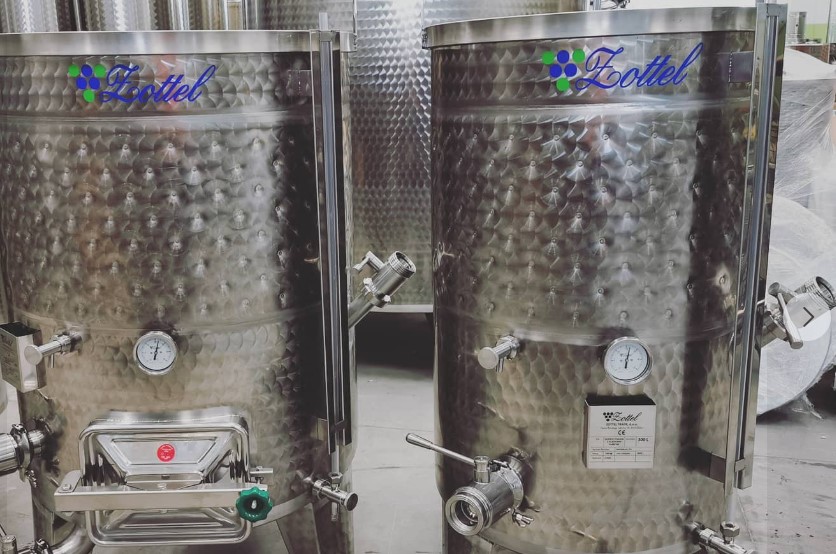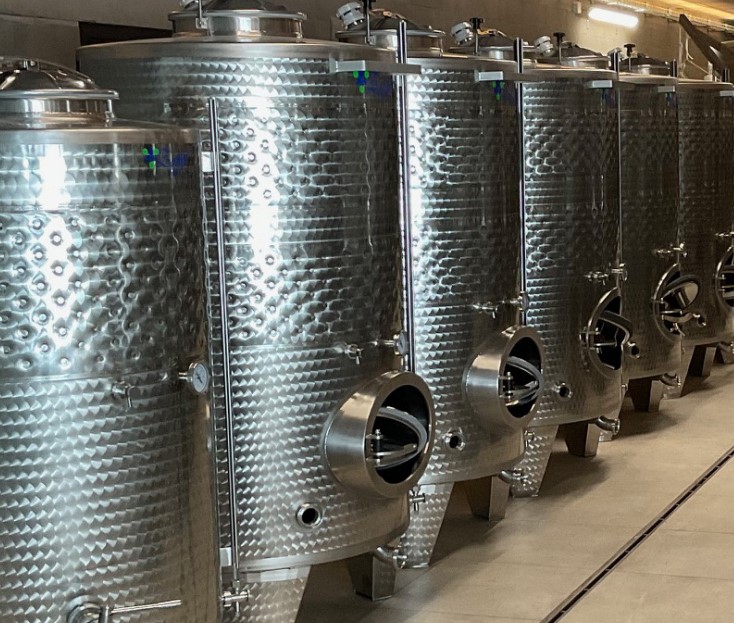In the intricate process of winemaking, after grapes are harvested, crushed, and fermented, the crucial stage of aging comes into play. This period can span from 5 months to several years and involves a decision that significantly influences the wine’s character: aging in oak barrels or stainless steel wine tanks. Winemakers face a dilemma – is one method superior to the other, and what sets them apart?
Stainless Steel Tank
Aging wine in stainless steel tanks offers a neutral environment, imparting no additional flavors to the wine other than providing a vessel for it to mature before bottling. Advocates of steel aging argue that it allows the true essence of the grape varietal to shine, free from the influence of wood. They emphasize the expression of terroir, where the unique characteristics of the vineyard, such as elevation, soil type, and sun exposure, are distinctly manifested in the wine. The analogy of homemade vegetable soup is used to describe steel-aged wines – they taste better when the flavors are allowed to naturally combine, evolve, and unfold. Steel aging results in wines with prominent fruit aromas and a refreshing, crisp taste.

Furthermore, some winemakers opt for stainless steel tanks due to their longevity and durability, eliminating the need for replacement every few years, unlike wooden barrels. This choice not only ensures consistency but also brings notable cost savings over time. While wooden barrels can be a hefty investment, costing up to $2,000.00 each, the economic advantages of using stainless steel tanks become evident, making them an appealing choice for winemakers aiming for both quality and efficiency.
Wood Fermentation and Aging: Enhancing Wine’s Complexity
In contrast to stainless steel, wood fermentation and aging play a significant role in shaping a wine’s taste and mouthfeel, enriching it with aromas, tannins, and textures. The historical adoption of wooden barrels by the Romans was driven by practicality, providing easier transportation compared to clay amphorae. Wooden barrels, being porous, expose the wine to outside air, allowing it to breathe slowly and undergo oxygenation. This process contributes to smoothing, softening, and “rounding out” the wine, concentrating flavors and enhancing the mouthfeel.
Oak is the Preferred Wood for Wine Aging
Oak, chosen for its unique qualities, is an ideal material for wine barrels. It is non-resinous and sap-free, allowing it to store liquid effectively while imparting desirable characteristics. Wines aged in oak barrels develop a creamy texture due to Malolactic fermentation, along with distinct aromas and a diverse range of tastes, including notes of caramel, cinnamon, coconut, marshmallow, nutmeg, smoke, and toasted bread. Oak barrels can be new, offering robust flavors, or older, providing more nuanced profiles. The charring or toasting of the staves further influences the wine, from lightly toasted to densely charred, enhancing aromas and flavors.
World of Oak Barrels
Different types of oak offer distinct characteristics to wines. United States oak, known for its porosity, imparts pronounced aromas of banana, coconut, and even dill pickle. Highly regarded French oak, with a solid grain, produces wines with structured tannins and refined aromas of butterscotch and vanilla. Slavonian oak is recognized for its fruitiness and woody notes. However, modern winemaking practices have introduced shortcuts to save time and money, such as using oak staves, chips, powder, and even oak concentrate (liquid oak) during fermentation and aging processes. These innovations allow winemakers to adjust a wine’s character efficiently while exploring various flavor profiles.
Similar Posts From The Same Category:
- The Rising Demand for Maribor Real Estate
- How to properly use pressure washers?
- Roofing contractors Grosse Ile Michigan
- What are the four basic sculpture techniques?
- Things to Do After Searching for Ljubljana Apartments for Sale
